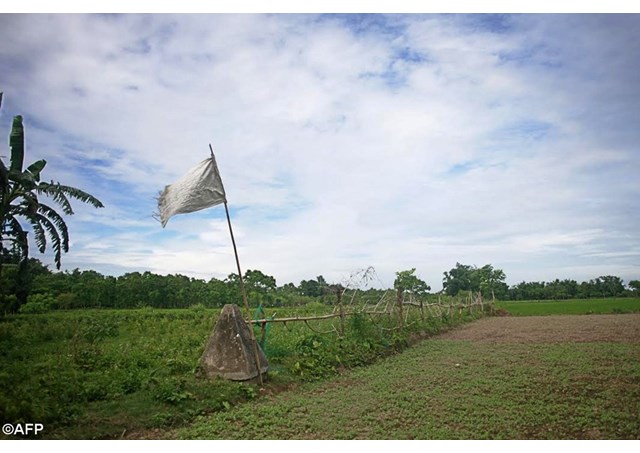
India, Bangladesh swap land near their border

(Vatican Radio) Jubilant crowds celebrated after India and Bangladesh, at one minute past midnight on Saturday, swapped tiny islands of land, ending one of the world's most intractable border disputes that has kept thousands of people in stateless limbo for nearly 70 years.
India and Bangladesh swapped land along their border, ending a decades long dispute
that had left more than 50,000 people virtually stateless.
The South Asian nations share a highly irregular, 2,500-mile border, where because
of a quirk in their shared history small pockets of land belonging to each had been
surrounded completely by the territory of the other.
At midnight Friday, those stranded, landlocked islets known as enclaves—111 Indian plots in Bangladesh and 51 Bangladesh parcels in India—hoisted new national flags. Their residents now have a choice: Stay and change nationalities, or move.
Most have decided to stay put, according to figures released by Bangladeshi officials. Worries about how and where migrants would be resettled appear to have prevented many people on both sides from moving, said a local official in the Kurigram district of Bangladesh.
Bangladesh declared its independence from Pakistan in 1971.
Since the 1970s there were attempts to fix the enclaves, but the Bangladesh and Indian governments couldn’t agree how to do it. So they languished, cut off from their home countries and unable to join the country that surrounded them.
It wasn’t until Indian Prime Minister Narendra Modi’s visit to Bangladesh in June that a final agreement was reached setting the stage for the handover.
The enclaves struggled with little administration or infrastructure, disconnected from their countries. Their residents were trapped between two states. Mr. Jalil said he used to go school in India by concealing his identity and smuggling himself past border guards that roamed the region and would sometimes beat people if they didn’t have the right paperwork.
“I had to sneak across Indian territory and then Bangladeshi territory and then finally enter India,” he said. “I was technically Bangladeshi, but I had no recognition in either country.”
He is one of nearly 15,000 Bangladeshis living in enclaves in India who have chosen to switch nationalities.
Across the border, the overwhelming majority of the roughly 37,000 Indians living in enclaves within Bangladesh also have also chosen to swap their citizenship, rather than move.
“The enclaves are changing hands, but I don’t want to go,” said Madhusudan Mohanto, 58, a resident of the Dasiachara enclave in the Kurigram district of Bangladesh. “My friends are here, so I’ll become a Bangladeshi citizen.”
Mr. Jalil is a Muslim and Mr. Mohanto a Hindu; both have chosen to become citizens of countries in which they are a minority.
“We didn’t have hospitals, schools, electricity--nothing,” said Mr. Mohanto. “Now we hope we’ll get our rights back.”
In Dasiachara, 284 people—almost evenly split between Muslims and Hindus—have applied to migrate to India.
Kashem Ali, 65, is one of those moving to India in the next few weeks. He will bring his wife and three of his children, but his two brothers and his daughter are staying and becoming Bangladeshi.
“I’m leaving my home,” said Mr. Ali. “But I hope I’ll get a new life in India.”
(Wall street Journal, NDTV)
| All the contents on this site are copyrighted ©. |


